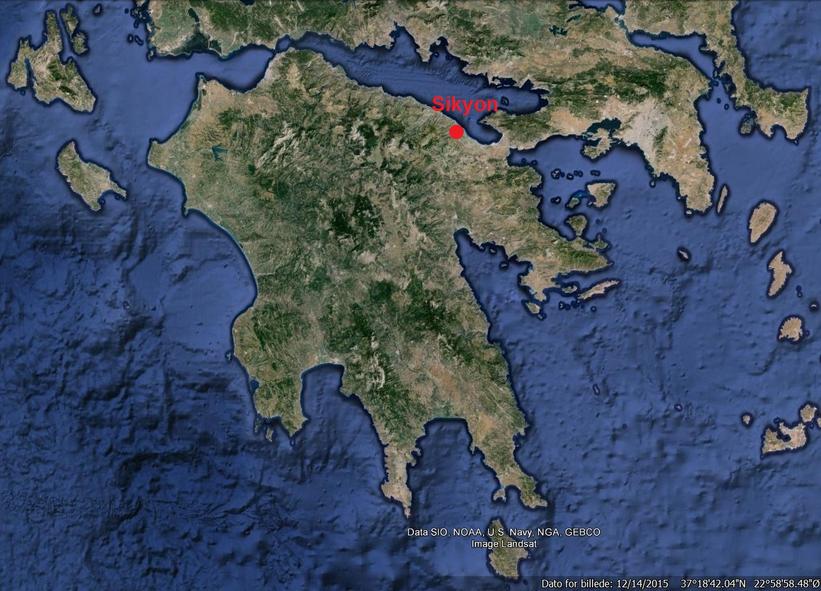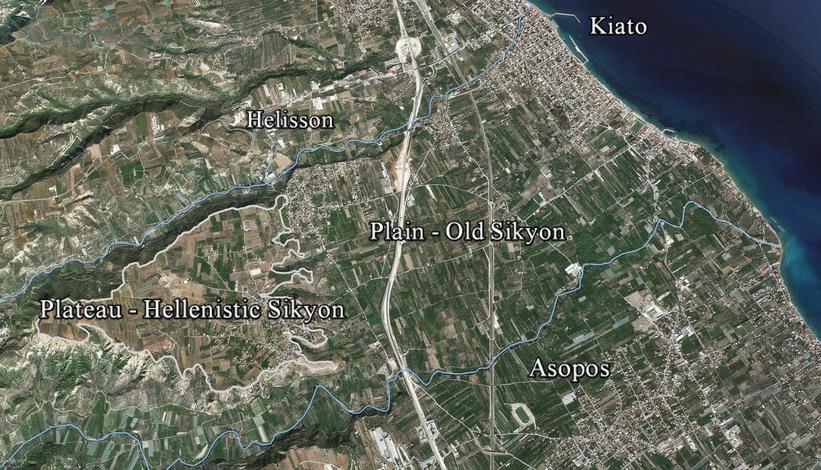Finding Old Sikyon
The Project
The ancient polis of Sikyon was located on the north-east coast of the Peloponnese, between the poleis of Corinth to the east and Pellene to the west (Fig. 1). It was famous as a centre of arts and crafts, particularly sculpture and painting, from Archaic times to the end of the 3rd c. BC. In 303 BC, the Macedonian general Demetrios Poliorcetes captured the city and rebuilt it at a new site close by where it could be better defended. The site of this Hellenistic city has been identified on a plateau between the rivers Asopos and Helisson and is well known through the investigations of American and Greek scholars since the 19th century (Fig. 2). Recently, the site is being studied by an important project conducted by the University of Thessaly in Volos and the Archaeological Society of Greece. The site of the Archaic and Classical city, however, has never been clearly identified. It is supposed to be located in the plain to the north-east of the plateau, where according to literary sources its acropolis was, and had a separate harbour (Fig. 2). In the plain between the two rivers, Classical remains have been found at various locations within the framework of rescue excavations, including houses and cemeteries, but these only provide sparse indications.

In the summer of 2015, a project was initiated to identify the site of the pre-Hellenistic city and to analyse the specific settlement structures and urban fabric of “Old Sikyon”. It is set up as a collaboration between the Ephorate of Antiquities of Corinth, represented by the Ephor and Greek project director Dr Konstantinos Kissas, the National Museum of Denmark in Copenhagen, represented by the senior researcher and director of the Danish side of the project Dr Silke Müth-Frederiksen (who followed Dr Rune Frederiksen in this position in March 2016), the Danish Institute at Athens, represented by its director Dr Kristina Winther-Jacobsen, and the Institute of Geosciences of the Christian Albrechts University at Kiel, represented by its director Prof Wolfgang Rabbel. Funding is provided by the Carlsberg Foundation (Denmark).
